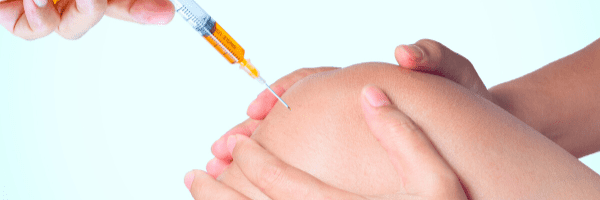Regenerative Injections

We specialize in a variety of injections that assist the body in healing injuries or regenerating tissue. Arthritis can be reversed in some cases while most patients with even advanced arthritis can find relief from pain along with improved mobility. Injured or inflamed tendons, ligaments or muscles respond very well to injection therapies. The various injections we provide are a great non-surgical option, and a much healthier alternative to the standard, ultimately harmful steroid injections.
Prolotherapy
Prolotherapy is derived from the Latin word “proli” which means to regenerate or rebuild. The traditional technique involves injecting a natural substance directly into the injured tissue in order to produce an inflammatory response which is then followed by a natural healing phase. This is a very successful, and affordable procedure, but it typically involves multiple injections over time in order to produce results. We primarily use these injections to tighten ligaments or joints to improve function and stability.
For more information on traditional prolotherapy, see What is Prolotherapy? from The American Osteopathic Association of Prolotherapy Regenerative Medicine.
Ozone
Ozone injection directly into joints or soft tissue will help stimulate healing and regeneration as well as reduce or eliminate pain. Nearly any joint or injury can be treated. A nutrient solution is first injected followed by ozone gas. Most patients report an immediate 50-75% reduction in pain. After a few weeks the pain is typically 20-30% better, and so on with each successive injection until the pain is gone. Usually this takes only 3-5 treatments a few weeks apart. With severe chronic pain, maintenance injections 3-4 times/year are usually necessary.
For more information about ozone and links to research on ozone injections click here.
Platelet Rich Plasma (PRP)
PRP therapy involves drawing the patient’s blood and processing it right in the office to produce a concentrate of platelets, which are then “activated” to release the growth and healing compounds.
Injecting PRP into damaged ligaments, tendons, and joints stimulates the natural repair process. On average, patients can expect to see improvements in 4 to 6 weeks. Depending on various factors including the patient’s age and overall health, combined with the exact condition being treated, a series of up to 4-5 injections may be required, although one can typically expect to see measurable progress with each injection.
For more information about PRP and links to research on PRP injections click here.
Peptides
A peptide is a small protein and over 7,000 naturally-occurring peptides have been identified that occur in our bodies. Peptides typically act as signaling molecules by binding to receptors on the cell surface and telling other cells and molecules what to do. Insulin is a familiar example of a peptide. Peptide therapy may be used to directly stimulate repair and regeneration of tissue including muscle, tendon, ligament, gut and nerves. BPC157 is the main peptide we use for joint injections.
Intra-Articular Injection of BPC 157 for Multiple Types of Knee Pain
Injection Fees
The fees start at $250 depending on the provider for injections of a single joint or area and start at $100 for additional joint/area during the same visit. There is no additional charge for traditional prolotherapy or ozone. PRP injections add about $330 – $400. BPC157 injections add about $250. Note that if you are a new patient to our clinic you will need to establish care with one of our providers before proceeding to injections. This requires a 15-30 minute new patient visit in order to take a detailed health history and do relevant examinations or studies prior to the injections. Our scheduling coordinator will assist in fine tuning this new patient visit such that we are often able to follow it with your first injection visit.
Most insurances, including Medicare, do not cover regenerative injections. This is according to our regional insurance coding and billing expert as well as the Centers for Medicare and Medicaid Services. See MedicareFAQ for a good review of this issue.
Beware of clinics that suggest insurance will cover regenerative injections. Check carefully with your insurance before committing to these procedures. In some cases you might get reimbursement, but again check carefully. We do provide you an invoice with itemized procedure and material codes to use for possible insurance reimbursement.
Who’s doing the injections?
Dr Rollins has done injections almost every day in his decades of general practice and has had extensive training with injection technique and regenerative therapies. He has performed thousands of injections and we take pride in making the injection process quick and easy. Our physician assistant, Katie McCloud, also has considerable experience with injections and under our direct training continues to add to her techniques.
Our injection procedures usually take only 15-30 minutes and patients are often surprised at how painless the injection procedures really are. Again, do your research on clinics offering regenerative injections, especially noting the training, experience and skill of the person doing the injections.
Additional services to augment your treatment
We specialize in treating the whole person. This means we can help with other therapies and lifestyle modifications to augment your regenerative injections. Consult with our health coach and nutritionist to help with nutrition and activity to accelerate your recovery. We can also guide you to various supplements, peptide or hormone therapies that may help.
